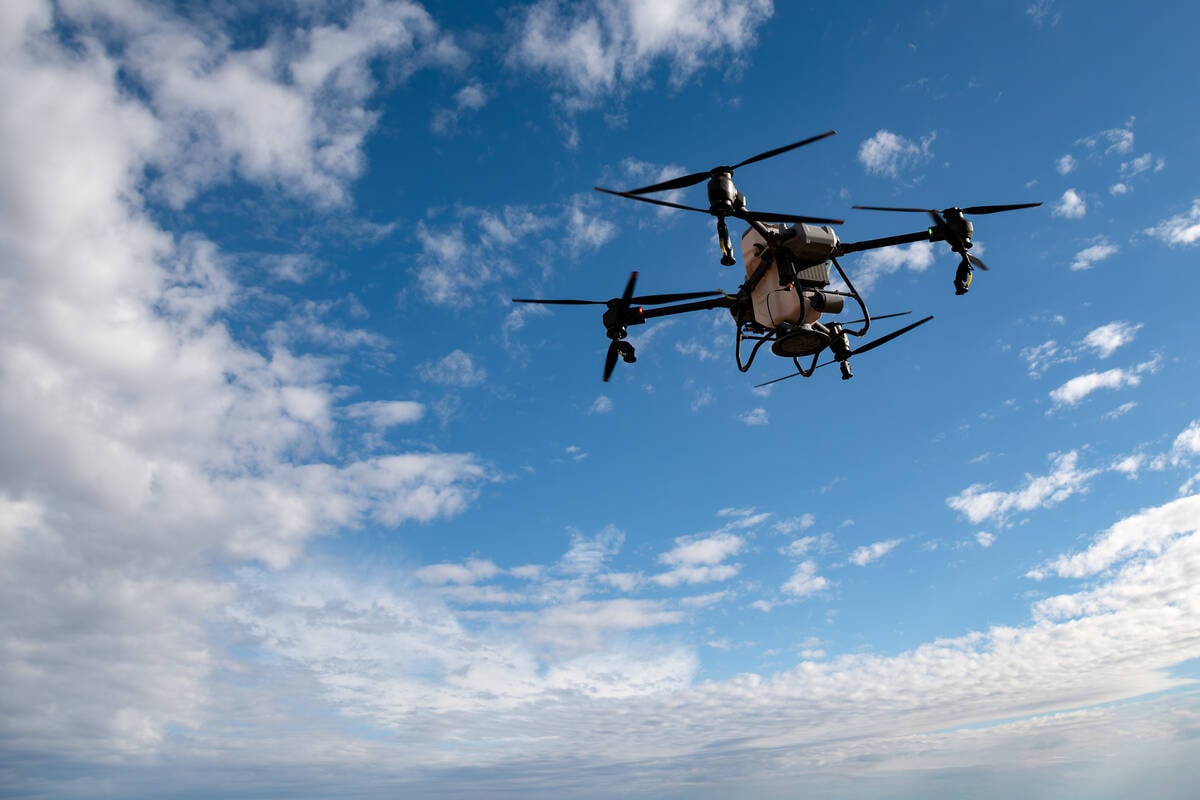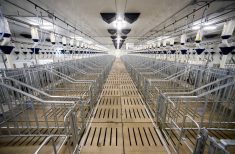All through the year accidents can happen and the need for emergency slaughter can arise.
Broken legs during breeding season, fighting or, very rarely during transport, downer cattle, make access to emergency slaughter imperative. In Alberta, the government recently announced changes that will allow a mobile butcher to take video of the animal, which can then be used by an inspector for the ante-mortem inspection. The same can be done for a testy animal that would harm itself if transported.
These are positive changes that address animal welfare concerns. This also eliminates wastage that has occurred in the past.
Read Also

Canada dragging feet on drone regulations
Canada has spent five years developing regulation and labels for drone spraying, farmers and chemical manufacturers want a clearer pathway.
Keep in mind if you own an animal and you want to butcher it, that can still be done and there is no need for inspection. When it is for your own use in Manitoba, it’s very similar to what happens with hunted meat. You take it for cutting and wrapping to the local mobile butcher.
As a large-animal veterinarian, mobile butchers would call us when there was a concern with what they saw internally while butchering and even hunters would call when butchering a recent kill.
This is a rare event, but I wanted to illustrate that you could reach out.
Most large-animal veterinarians can at least advise you what the condition of the animal is and whether it would affect meat quality or food safety. I have even sent the very odd specimen away for confirmation on the condition. If you butcher for yourself with no inspection, chances are if it looks healthy, it is. But always have the mobile butcher tell you if something wasn’t normal in appearance. Frequently the questions are localized abscesses or enlarged lymph nodes — again, videos or pictures help with a distance exam.
You can get a list of provincial plants and the veterinarians accredited to do ante-mortem inspection. There are some in all the major cattle-producing areas of Manitoba.
After being bled out, the animal can be taken to a provincial plant — but these days, with the plants very full to capacity, phone ahead. If they can’t do it, a mobile butcher may be an option. I have worked with many over the years and the vast majority are dedicated, hard working, versatile, and customer focused.
Alberta producers can also now sell an animal to an individual and butcher it on site instead of having to first transport it to the new owner’s farm (if that was possible), which added further stress of transport and shrinkage as well as the possibility of dark cutting beef.
Cattle, sheep, goats and bison are going to be the calmest where they were raised. There is no more humane death than when they are put down while eating at the feed bunk or in pasture. Mobile butchers know how to do this properly and how to avoid any fecal contamination (a grassed area or on fresh snow in early winter is one of the cleanest ways, in my opinion).
I would encourage anyone who has freezer capacity to get an entire animal butchered. You learn lots about the cuts of meat and seeing internal organs is a learning experience. Inspectors or veterinarians can also monitor parasite levels or see parasite migration and so could, in some cases, even comment on management changes to the herd regarding parasite control, feeding, and pneumonia prevention.
I had hoped the new rules would allow marketing to other provinces by allowing provincially inspected meat to cross provincial borders. If provincial rules are very close in each province, I don’t understand why extra-provincial movement couldn’t be looked at.
Being able to sell outside the province would really help bigger meat marketers with specialty products expand and increase meat sales. This would mean greater utilization and output of provincial plants and the potential for more being built or added on to.
In Alberta, the biggest growth areas of slaughter capacity in recent years has been Hutterite colonies, which built provincially inspected plants, mostly for colony-raised poultry. A meat plant is just being finalized on one colony and I believe it will be accepting most red meats.
The video ante-mortem work is just being finalized so let’s all use that where we can and do these emergency slaughters as quickly as possible. Also, encourage more people (urban or rural) to purchase live animals on farm. Buying from someone you know and trust can be very gratifying to most people.
COVID-19 has revealed how vulnerable the food supply chain can be. It is a shame when we have some of the best beef in the world and can’t get access to enough of it. These recent changes will help a little bit, and gradually we are increasing Alberta’s provincial capacity.
















